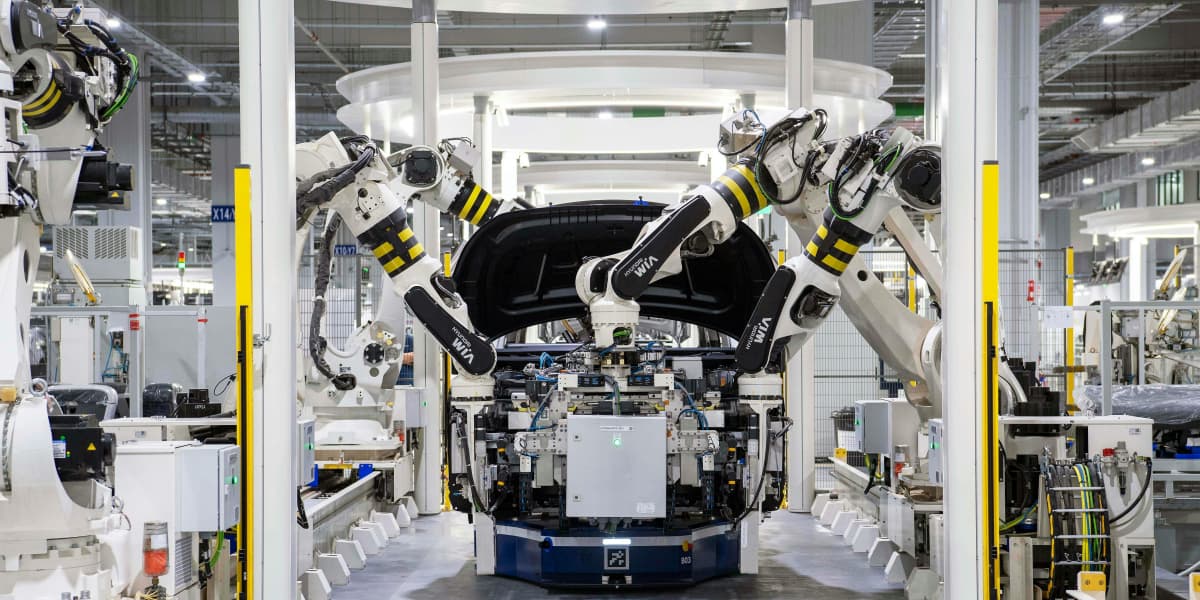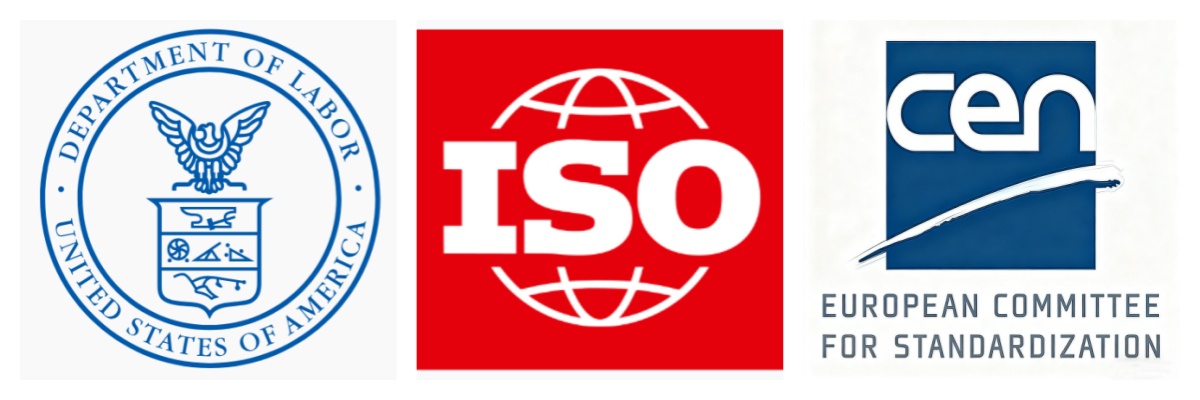Leitfaden für industrielle LED-Beleuchtung in Fabriken

Steigende Energiekosten, strenge Sicherheitsvorschriften und Produktionsausfälle zwingen Facility Manager dazu, die Beleuchtung zu überdenken.
Dieser praktische Leitfaden zur industriellen LED-Beleuchtung erklärt, was industrielle LED-Systeme sind, welche globalen Standards und Technologien dahinterstecken, wie man die richtigen Leuchten auswählt, effiziente Layouts entwirft und zuverlässige Hersteller überprüft.
Sie finden praxisorientierte Spezifikationen, Vergleichschecklisten und Tipps zur Rentabilitätssteigerung, um Energiekosten zu senken, Sichtverhältnisse und Sicherheit zu verbessern und die Einhaltung gesetzlicher Vorschriften zu gewährleisten. Lesen Sie weiter, um einen fundierten Beleuchtungsplan für Ihr Werk, Lager oder Ihre Werkstatt zu erstellen.
Verzeichnis:
1. Was ist industrielle LED-Beleuchtung?
2. Globale Standards für industrielle Beleuchtung verstehen
3. Welche Technologien stecken hinter der modernen industriellen LED-Beleuchtung?
4. Welche Vorteile bietet der Einsatz von industriellen LED-Leuchten?
5. Welche Art von industrieller LED-Beleuchtung benötigen Sie?
6. Wie entwirft man ein effizientes industrielles LED-Beleuchtungskonzept?
7. Wie wählt man die beste LED-Industriebeleuchtung für die Fabrik aus?
8. Die Zukunft der industriellen LED-Beleuchtung – Was kommt als Nächstes?
1. Was ist industrielle LED-Beleuchtung?
Industrielle LED-Beleuchtung bezeichnet Hochleistungsbeleuchtungssysteme, die für anspruchsvolle Arbeitsumgebungen wie Fabriken, Lagerhallen, Produktionslinien und große Werkstätten entwickelt wurden. Im Gegensatz zur Büro- oder Einzelhandelsbeleuchtung, bei der Sehkomfort und Ästhetik im Vordergrund stehen, konzentriert sich die Industriebeleuchtung auf Langlebigkeit , Helligkeit und Sicherheit unter rauen Bedingungen wie Staub, Vibrationen und Temperaturschwankungen.
Der Begriff „industriell“ bedeutet im Allgemeinen, dass die Beleuchtung für den harten Einsatz geeignet sein muss – oft 24 Stunden am Tag, in großen Montagehöhen und über weite Bereiche, wo präzise Sichtverhältnisse für die Produktivität und die Unfallverhütung unerlässlich sind.
Im Vergleich zu herkömmlichen Leuchtstoff- oder Halogenmetalldampflampen bieten industrielle LED-Leuchten eine höhere Lichtausbeute pro Watt, sofortige Startbereitschaft und eine deutlich längere Lebensdauer. Zudem sind sie wartungsärmer, wodurch Produktionsausfälle reduziert werden.

Industrielle LED-Beleuchtung gibt es in verschiedenen Hauptformen:
Hochregalleuchten – ideal für hohe Decken in Lagerhallen und Produktionsstätten.
Niedrige Hallenstrahler – werden in niedrigeren Räumen wie Werkstätten oder Montagelinien eingesetzt.
Industrielle LED-Flutlichtstrahler – konzipiert für Außenhöfe, Ladezonen oder Gebäudeumrandungen.
Fabrik- und Werkstattbeleuchtung – maßgeschneiderte Systeme, die Effizienz, Sicherheit und gleichmäßige Helligkeit für spezifische Aufgaben vereinen.
Kurz gesagt, industrielle LED-Beleuchtung bildet die Grundlage für einen sichereren, effizienteren und kostengünstigeren Arbeitsplatz – ein wichtiger Schritt hin zu intelligenteren industriellen Abläufen.
2. Globale Standards für industrielle Beleuchtung verstehen
Die industrielle LED-Beleuchtung unterliegt einer Reihe internationaler Normen, die festlegen, wie hell, gleichmäßig und sicher die Beleuchtung am Arbeitsplatz sein muss. Diese Normen gewährleisten, dass die Beleuchtung Produktivität, Sehkomfort und Arbeitssicherheit fördert – zentrale Ziele für jede Industrieanlage.
2.1 Wichtige internationale Standards
(1) I ES (Illuminating Engineering Society, USA)
Veröffentlicht das IES Lighting Handbook (11. Auflage, 2020) , das oft als „Beleuchtungsbibel“ bezeichnet wird. Es bildet die Grundlage für alle Praktiken der Lichtplanung, einschließlich photometrischer Prüfungen, Blendungsbegrenzung und Energieeffizienz.
IES RP-7 (Empfohlene Vorgehensweise für die Industriebeleuchtung): Bietet detaillierte Richtlinien zu Beleuchtungsstärken, Gleichmäßigkeit der Beleuchtung und Leuchtenplatzierung in Industrieanlagen. → Quelle: IES Lighting Handbook, 11. Auflage (2020), IES RP-7-17.

(2) CIE (Internationale Beleuchtungskommission)
Die CIE entwickelt globale Standards für Lichtqualität, Farbwiedergabe und die menschliche Sehwahrnehmung. Ihre wichtigste Publikation CIE S 008/E:2001 – Beleuchtung von Arbeitsplätzen – hat zahlreiche regionale Standards beeinflusst. → Quelle: CIE-Zentralbüro, Wien, Österreich.
(3) ISO 8995-1:2024 (CIE S 008/E:2001, aktualisiert)
Die neueste gemeinsame Norm von ISO und CIE ersetzt ISO 8995-1:2002. Sie legt die Anforderungen an die visuelle Leistungsfähigkeit und ergonomische Beleuchtung von Arbeitsplätzen in Innenräumen fest und betont dabei Gleichmäßigkeit, Blendungsgrenzwerte und die Sichtbarkeit von Aufgaben. → Quelle: Internationale Organisation für Normung (ISO), Ausgabe 2024.

(4) EN 12464-1:2021 (Europa)
Definiert Mindestwerte für Beleuchtungsstärke, Gleichmäßigkeit, Farbwiedergabe und UGR (Unified Glare Rating) für industrielle Innenräume in der gesamten EU. → Quelle: Europäisches Komitee für Normung (CEN).
(5) OSHA 29 CFR 1926.56 (USA)
Legt Mindestbeleuchtungsstärken für verschiedene Arbeitsbereiche fest, um die Sicherheit der Arbeiter zu gewährleisten. → Quelle: US-Arbeitsministerium, Arbeitsschutzbehörde (OSHA).
2.2 Empfohlene Beleuchtungsstärken
Anwendungsgebiet | Empfohlene Luxusklasse (lx) | Standardreferenz |
Lagergänge (Lagerung) | 100–200 lx | EN 12464-1:2021 / IES RP-7-17 |
Montage- oder Produktionslinien | 300–750 lx | ISO 8995-1:2024 / CIE S 008/E |
Präzisions- oder Inspektionsbereiche | 750–1000 lx | IES RP-7-17 / CIE S 008/E |
Ladezonen im Freien | 100–300 lx | IES RP-7-17 / OSHA 29 CFR 1926.56 |
2.3 Parameter der Lichtqualität
CRI (Farbwiedergabeindex): Empfohlen wird ein Wert von ≥80 für eine genaue Farbunterscheidung in industriellen Umgebungen.
Farbtemperatur: Neutral bis kühlweiß (4000–6000K) verbessert Konzentration und Sichtbarkeit in Produktionsräumen.
UGR (Unified Glare Rating): Der Wert sollte unter 22 liegen, um Blendung und visuelle Ermüdung zu minimieren. → Quelle: EN 12464-1:2021, ISO 8995-1:2024.
2.4 Zertifizierungs- und Konformitätszeichen
Zertifizierung | Region | Was es bestätigt |
UL (Underwriters Laboratories) | UNS | Bestätigt die Einhaltung der Elektro- und Brandschutzbestimmungen. |
CE (Conformité Européenne) | EU | Entspricht den EU-Richtlinien für Sicherheit, Gesundheit und Leistung. |
DLC (DesignLights-Konsortium) | Nordamerika | Überprüft die Energieeffizienz; oft Voraussetzung für Fördergelder. |
RoHS (Restriction of Hazardous Substances – Beschränkung gefährlicher Stoffe) | Global | Gewährleistet, dass die Produkte frei von gefährlichen Stoffen wie Blei oder Quecksilber sind. |
Die Einhaltung dieser Standards garantiert, dass industrielle LED-Beleuchtungssysteme zuverlässig, effizient und mit globalen Sicherheitsanforderungen konform sind.
Ceramiclite orientiert sich an diesen internationalen Standards, um Beleuchtungslösungen zu liefern, die den professionellen Erwartungen an Leistung und Konformität weltweit gerecht werden.
3. Welche Technologien stecken hinter der modernen industriellen LED-Beleuchtung?
Moderne industrielle LED-Beleuchtung vereint Optik, Elektronik und intelligente Steuerungssysteme, um auch unter härtesten Arbeitsbedingungen eine helle, langlebige und effiziente Ausleuchtung zu gewährleisten. Die folgenden Kerntechnologien kennzeichnen die heutigen Hochleistungs-Industriebeleuchtungssysteme.
3.1 Hochleistungs-LED-Chips und fortschrittliche Optik
Das Herzstück jeder industriellen LED-Leuchte ist ihr LED-Chip. Führende Hersteller wie Cree, Nichia und Osram produzieren Chips mit hoher Lichtausbeute und Effizienz (typischerweise 150–200 lm/W), die maximale Helligkeit bei minimalem Stromverbrauch gewährleisten.
Fortschrittliche Sekundäroptiken – wie z. B. präzisionsgeformte Linsen und Reflektoren – helfen dabei, den Lichtstrahl zu formen und zu lenken, wodurch Blendung minimiert und die Gleichmäßigkeit in großen Bereichen wie Lagerhallen und Montagehallen maximiert wird.
3.2 Effiziente Treiber und Wärmeableitung
LED-Treiber regeln den Stromfluss, um eine gleichbleibende Lichtleistung zu gewährleisten und das System vor Spannungsschwankungen zu schützen. Industrielle Treiber sind häufig 0–10V- oder DALI-dimmbar und weisen Leistungsfaktoren über 0,95 für eine stabile Energieversorgung auf.
Das Wärmemanagement ist ebenso entscheidend. Aluminium-Druckgussgehäuse, Heatpipes und Kühlkörper mit mehreren Lamellen gewährleisten eine effektive Wärmeableitung und verlängern die Lebensdauer der LED auf über 50.000 Stunden.
3.3 Flimmerfreies Design mit hoher Bildwiederholfrequenz
Flimmern durch minderwertige Treiber kann zu Augenbelastung bei den Anwendern und zu Geräteausfällen führen. Industrielle LED-Leuchten verwenden heutzutage Konstantstrom-Hochfrequenztreiber (typischerweise ≥ 25 kHz), um eine flimmerfreie und stabile Lichtleistung zu gewährleisten .
This technology not only improves visual comfort but also ensures camera-friendly performance for machine vision systems and high-speed operations.
3.4 IP and IK Protection for Harsh Environments
Industrial spaces often face dust, moisture, and impact risks. IP (Ingress Protection) and IK (Impact Resistance) ratings define a luminaire’s durability:
IP65–IP67: Dust-tight and water-resistant, ideal for factories or outdoor yards.
IK08–IK10: Resistant to strong mechanical impacts.
Proper sealing, silicone gaskets, and reinforced housings allow reliable operation in environments with oil mist, vibration, or high humidity.
→ Source: IEC 60529 (IP Rating) & IEC 62262 (IK Code).
3.5 Smart Control Compatibility (DALI, Zigbee, Bluetooth, IoT)
Modern industrial LED lights increasingly integrate intelligent control systems.
DALI (Digital Addressable Lighting Interface): Enables precise dimming and zoning control.
Zigbee and Bluetooth Mesh: Allow wireless connectivity for large-scale facility management.
IoT Platforms: Integrate sensors for occupancy, daylight harvesting, and energy monitoring.
Such technologies support smart factory and Industry 4.0 applications—where lighting responds automatically to operational needs, optimizing both comfort and efficiency.
By combining optical precision, electronic stability, mechanical protection, and smart control, modern industrial LED lighting achieves a balance of brightness, reliability, and intelligence — transforming lighting from a passive fixture into an active component of smart industrial infrastructure.
4. What Are the Benefits of Using Industrial LED Lights?
Upgrading to industrial LED lighting is no longer just about modernizing a facility—it’s a proven way to reduce operating costs, improve safety, and achieve sustainability goals. The advantages of LEDs over traditional lighting (like metal halide, fluorescent, or HPS lamps) are measurable and long-term.
4.1 Energy Efficiency and Lower Carbon Footprint
Industrial LED lights convert up to 90–95% of input energy into visible light, compared with only 60–70% for high-intensity discharge (HID) lamps. This results in energy savings of 50–70%, depending on the application.
Many facilities also adopt smart dimming controls and motion sensors, further cutting unnecessary power consumption. Lower energy use directly translates into reduced CO₂ emissions — a key metric in corporate sustainability and ESG reporting.
4.2 Longer Lifespan and Minimal Maintenance
Industrial-grade LEDs typically last 50,000–100,000 hours, compared with 10,000–20,000 hours for fluorescent and metal halide lamps.
Because they contain no filaments or fragile glass, LEDs maintain brightness longer and are less prone to breakage from vibration or impact.
This significantly lowers maintenance frequency and replacement labor costs — especially in high-ceiling environments like warehouses or production halls.
4.3 Brighter and Safer Work Environments
LEDs deliver instant full brightness and superior color rendering (CRI ≥80), improving visibility of tools, labels, and safety markings.
Consistent illumination helps reduce accidents caused by shadows or glare, while flicker-free operation prevents worker eye strain and fatigue.

4.4 Stable Performance in Harsh Conditions
Unlike traditional lamps that degrade in cold or humid environments, industrial LEDs perform reliably between –30°C and +50°C and maintain stable lumen output in high humidity.
Sealed housings with IP65–IP67 protection prevent dust and moisture ingress, making them suitable for factories, foundries, and outdoor facilities.
4.5 ROI and Payback Period
The typical payback period for converting to industrial LED lighting ranges from 1.5 to 3 years, depending on energy costs, operating hours, and regional rebates. After payback, the continued energy and maintenance savings contribute directly to long-term ROI.
By combining high efficiency, durability, and safety, industrial lighting delivers both operational and financial value. It’s not just a lighting upgrade — it’s an investment in productivity, sustainability, and smarter facility management.
5. Which Type of Industrial LED Light Do You Need?
Choosing the right industrial LED light depends on installation height, lighting layout, and work environment. Below are the main categories used across modern industrial facilities — each designed for specific applications and performance needs.
(1) High Bay LED Lights – For Tall Warehouses and Factories
High bay lights are designed for ceilings above 20 feet (6 meters). They provide powerful, uniform illumination for large spaces such as manufacturing workshops, distribution centers, and aircraft hangars. Their deep reflectors and high lumen output ensure clear visibility even from long mounting distances.
Ceramiclite HB01 LED High Bay Light boasts a high luminous efficiency of 160lm/W and an extended lifespan of 102,000 hours (meeting the L80B10 standard at 35℃). It features a protection rating of IP67/IP69K/IK08 and comes with an 8-year warranty.

(2) Low Bay LED Lights – For Mid-Height Industrial Spaces
Low bay lights are used in areas with ceiling heights between 10–20 feet (3–6 meters), such as assembly halls, garages, and small warehouses. They offer wide-beam optics to distribute light evenly without glare, improving comfort and visual accuracy for workers.
(3) LED Shop Lights – For Workstations and Production Lines
Shop lights are typically installed above workbenches, inspection areas, or assembly tables. They emphasize brightness and color accuracy to enhance precision tasks. Slim housing and linkable designs make them easy to mount in rows, ideal for manufacturing or maintenance workshops as LED workshop lights.
(4) LED Strip Lights – For Linear or Continuous Lighting Needs
Strip lights provide linear illumination for corridors, conveyor belts, or narrow aisles. Their continuous layout eliminates dark zones, improving safety in logistics and assembly environments. They are also used under shelves or inside machinery for localized task lighting.
(5) LED Flood Lights – For Outdoor Industrial Yards and Perimeters
Flood lights are built for durability and weather resistance. They illuminate loading docks, parking lots, and construction areas with high-intensity beams, ensuring both visibility and security. Industrial-grade models often feature IP65+ protection and wide operating temperature ranges.
Each of these LED categories serves a distinct role within the industrial ecosystem — from overhead illumination to focused task lighting and exterior security.
When selecting industrial LED light fixtures, consider mounting height, coverage area, environmental conditions, and energy goals. Matching the right LED type to each application ensures optimal visibility, safety, and long-term efficiency for your facility.
6. How to Design an Efficient Industrial LED Lighting Layout?
A well-designed lighting layout is essential to achieve both energy efficiency and worker safety in industrial environments. The goal is to deliver uniform brightness with minimal shadows or glare, ensuring that every area of the workspace is adequately lit without wasting power.
(1) Assess the Space and Ceiling Height
The first step is understanding the dimensions of the facility. Ceiling height determines fixture type and beam angle — for example, high bay lights suit ceilings above 6 meters, while low bay or linear lights are ideal for mid-height areas. Taller spaces require narrower beam angles to project light further, whereas lower ceilings benefit from wider beams for uniform spread.
(2) Plan Fixture Spacing and Mounting Arrangement
Incorrect spacing can create uneven lighting or dark spots. As a general guideline, the distance between fixtures should be about 1 to 1.5 times the mounting height. For example, if lights are mounted 8 meters high, spacing them 8–12 meters apart often provides balanced coverage. Reflective surfaces such as white walls or bright ceilings can help amplify illumination and reduce the number of fixtures needed.
(3) Consider Beam Angle and Reflectance
Beam angle controls how light is distributed across the floor. Narrow beams concentrate brightness in small areas, suitable for tall shelves or high ceilings. Wide beams work better in open areas like workshops. Reflectance from walls, floors, and machinery also affects overall brightness — surfaces with higher reflectivity improve lighting efficiency.
(4) Use Lighting Simulation Tools
Before installation, lighting design software (such as Dialux or Relux) can simulate illumination patterns, predict lux levels, and optimize fixture placement. These simulations ensure compliance with local standards for workspace lighting and help identify potential glare or shadow zones.
(5) Combine Fixture Types for Layered Illumination
A single light type rarely meets all industrial needs. Combining high bay lights for general illumination, task lights for workbenches, and flood lights for outdoor or safety zones creates a layered system that balances brightness, comfort, and energy use.
By aligning fixture choice, spacing, and simulation-based design, industrial facilities can achieve a well-lit, energy-efficient, and visually comfortable environment that enhances both safety and productivity.
7. How to Choose the Best LED Industrial Lights Factory?
Selecting a trustworthy industrial LED lighting factory is critical to ensuring long-term performance, safety, and return on investment. A well-qualified manufacturer provides not just lighting products, but complete technical assurance and service reliability.
(1) Verify Factory Qualification and Production Capability
A reliable LED lighting factory should have its own production line, R&D department, and quality control system. This guarantees consistency in components, assembly, and testing. Unlike resellers who outsource manufacturing, factory-direct suppliers can control every stage of production — from LED chip sourcing to driver calibration — ensuring higher product reliability and stable supply.
(2) Check Certification and Compliance
Authentic quality always comes with recognized certifications. Look for CE, RoHS, UL, ETL, and CB marks, which indicate compliance with international electrical and safety standards. These certifications confirm that the lighting products have passed rigorous performance and safety testing — an essential factor for industrial applications.
(3) Request Samples and Validate Test Reports
Before placing large orders, sample testing is the most direct way to evaluate brightness, color consistency, heat management, and build quality. Reputable manufacturers will provide IES photometric files, LM-79/LM-80 test reports, and warranty documentation upon request.
(4) Evaluate Technical Support and Customization Capability
Every industrial site has unique lighting requirements. Choose a supplier capable of custom design, DIALux simulation support, and flexible mounting solutions. Technical expertise in smart controls (e.g., DALI, Zigbee) and energy modeling is also a sign of a mature manufacturer.
(5) Compare Warranty and After-Sales Service
Warranty length reflects confidence in product durability. The industrial standard is typically 5 years, but leading manufacturers offer 8–10 years. Comprehensive after-sales service and fast response are equally important for long-term operations.
Ceramiclite is a professional industrial LED lighting manufacturer integrating R&D, production, and global sales. The company holds CE, RoHS, CB, CCC, UL, and ETL certifications and provides up to 10 years of warranty for select products — a commitment that exceeds most competitors.
Explore Ceramiclite’s professional-grade industrial lighting solutions today!
8. Future of Industrial LED Lighting — What’s Next?
Industrial LED lighting is evolving from simple illumination to intelligent, data-driven infrastructure that supports energy efficiency, safety, and productivity goals. The next generation of lighting systems will redefine how factories and warehouses operate.
(1) Smart Industrial Lighting Systems
The most significant innovation is the adoption of smart sensors, IoT platforms, and automated control systems. These allow lights to adjust brightness based on motion, daylight, or occupancy levels — reducing unnecessary power use. Integration with protocols like DALI-2, Zigbee, and Bluetooth Mesh enables centralized control and remote monitoring, helping facility managers improve energy efficiency by up to 60% (source: U.S. Department of Energy, 2024).
(2) Integration mit erneuerbaren Energien
Fabriken kombinieren zunehmend LED-Systeme mit Solar- und anderen erneuerbaren Energielösungen . Intelligente Steuerungen können die Beleuchtungszeiten mit der Energieerzeugung vor Ort synchronisieren und Unternehmen so helfen, Klimaneutralitäts- und ESG-Ziele zu erreichen und gleichzeitig die Betriebskosten zu senken.
(3) Menschzentrierte Beleuchtung für bessere Arbeitsumgebungen
Neben Energieeinsparungen wird sich die zukünftige Lichtplanung auf den menschlichen Komfort und die Anpassung an den zirkadianen Rhythmus konzentrieren . Durch die Anpassung von Farbtemperatur und Intensität im Tagesverlauf kann eine nutzerzentrierte Beleuchtung die Konzentration verbessern, Ermüdung reduzieren und die Sicherheit erhöhen – ein wachsender Trend, der durch Forschungsergebnisse des CIE und des WELL Building Standard unterstützt wird.
(4) Vorausschauende Wartung und Datenanalyse
KI-gestützte Analysen werden schon bald Komponentenausfälle vorhersagen, bevor sie auftreten. Dies reduziert Ausfallzeiten und optimiert Wartungspläne, wodurch ein kontinuierlicher Betrieb in Großanlagen gewährleistet wird.
_thumb.jpg)

